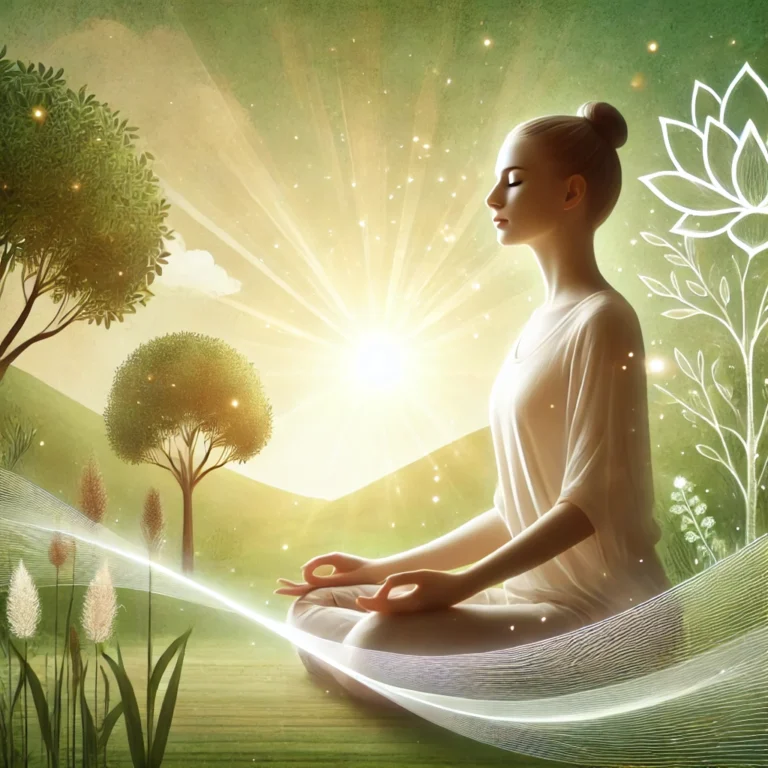Meditation, as taught by Adaji Brahm, serves as a pathway to mental clarity, inner peace, and deep self-discovery. This guide explores the methods and teachings of Adaji Brahm How to Meditate for enhanced well-being. Adaji Brahm’s approach offers techniques that are both accessible and deeply transformative, with a focus on mindfulness, relaxation, and the journey of letting go.
Introduction
Adaji Brahm is a renowned meditation teacher whose techniques have empowered countless individuals to find inner calm and clarity. His teachings provide not only a step-by-step approach to meditation but also a spiritual journey that allows individuals to connect with their authentic selves. The principles and practices within Adaji Brahm’s teachings offer tools for building resilience, achieving emotional stability, and navigating the complexities of modern life: Adaji Brahm How to Meditate.
What is Meditation?
Meditation, in Adaji Brahm’s view, is a profound practice of mind training that centers on stillness and awareness. It involves focusing attention inward, reducing mental chatter, and learning to observe one’s thoughts and emotions without interference. Meditation is not about forcing oneself to silence the mind but instead creating space to simply “be.”
The Purpose of Meditation
Adaji Brahm’s meditation philosophy emphasizes the benefits of finding a peaceful mind. By creating a sense of tranquility, meditation helps people better understand themselves, cultivate self-compassion, and improve emotional regulation. The benefits extend to all areas of life, from improved focus to better mental health, providing a solid foundation for personal growth: Adaji Brahm How to Meditate.
Preparing for Meditation
Creating the right environment for meditation is essential. Follow these steps to prepare effectively:
- Find a Quiet Space: Choose a space free from distractions. A designated area can improve focus.
- Comfortable Seating: Opt for a chair, cushion, or mat that supports a stable and comfortable posture.
- Mental Preparation: Approach meditation with an open mind, free from expectations or pressure.
The Role of Breathing
Breathing plays a critical role in the meditation process, serving as the anchor for one’s attention. Adaji Brahm teaches simple yet effective breathing techniques to calm the nervous system, lower stress levels, and increase oxygen flow, which leads to mental clarity: Adaji Brahm How to Meditate.
Adaji Brahm’s Core Meditation Techniques
- Breath Focus: Concentrating on each inhale and exhale.
- Body Scanning: Observing sensations throughout the body.
- Visualization: Engaging the mind in calm, serene imagery.
- Repeating Mantras: Using phrases or sounds to maintain focus.
Guided Meditation Practices
Guided meditation can make meditation more accessible for beginners. By following a guide or using audio, practitioners can stay on track and learn various visualization methods, body awareness practices, and positive affirmations: Adaji Brahm How to Meditate.
The Power of Mindfulness
Mindfulness is about observing the present moment without judgment. Adaji Brahm teaches practitioners to pay attention to each thought, feeling, or sensation without clinging or reacting. This practice encourages self-awareness, making it easier to manage stress and cultivate a positive outlook on life.
Letting Go
In meditation, “letting go” is an invitation to release expectations, negative thoughts, and distractions. Adaji Brahm’s techniques emphasize surrendering control, allowing one’s mind and emotions to settle naturally: Adaji Brahm How to Meditate.
Advanced Meditation Practices
For those ready to deepen their practice, Adaji Brahm suggests more intensive forms of meditation, such as:
- Silent Meditation: Sitting in silence to explore inner stillness.
- Extended Breath Awareness: Focusing on subtle breath patterns.
- Deep Observation: Observing thoughts, emotions, and physical sensations at a granular level.
Benefits of Meditation
Meditation offers a wealth of benefits, including:
- Mental Clarity: Reduced mental clutter and improved decision-making.
- Emotional Resilience: Enhanced ability to handle stress and difficult emotions.
- Physical Health: Lower blood pressure, improved immune response, and better sleep.
Common Challenges and Solutions
- Wandering Thoughts: Gently bring your focus back to the breath.
- Restlessness: Practice shorter sessions and gradually build endurance.
- Difficulty Focusing: Use a mantra or guided meditation to stabilize attention.
Creating a Routine
Building a meditation habit requires consistency. Start with small, manageable sessions and gradually increase duration. Set realistic goals to encourage progress without feeling overwhelmed: Adaji Brahm How to Meditate.
Tips for Staying Motivated
Meditation requires commitment. Use techniques like setting intentions, joining a meditation group, or listening to encouraging talks to stay inspired.
Frequently Asked Questions
1. How long should I meditate daily?
Start with 5-10 minutes, gradually increasing as you grow more comfortable.
2. What if I can’t stop thinking?
Thinking is natural; gently return to your breath each time you notice your mind wandering.
3. How does breathing help in meditation?
Breathing anchors your focus, stabilizing both the mind and body.
4. Can meditation reduce stress?
Yes, regular practice reduces stress by calming the nervous system and promoting relaxation.
5. What is mindfulness in Adaji Brahm’s meditation?
Mindfulness means observing thoughts and sensations without judgment, helping cultivate awareness.
6. Do I need a quiet space?
While a quiet space is ideal, you can meditate anywhere with practice.
Conclusion
“Adaji Brahm How to Meditate” meditation techniques provide a comprehensive framework for self-discovery and mental tranquility. Through mindful observation, breathing techniques, and a gentle approach to self-awareness, these practices guide individuals toward a more peaceful and centered life. Regular practice brings mental clarity, emotional resilience, and physical health benefits, making meditation a valuable tool in modern life.




